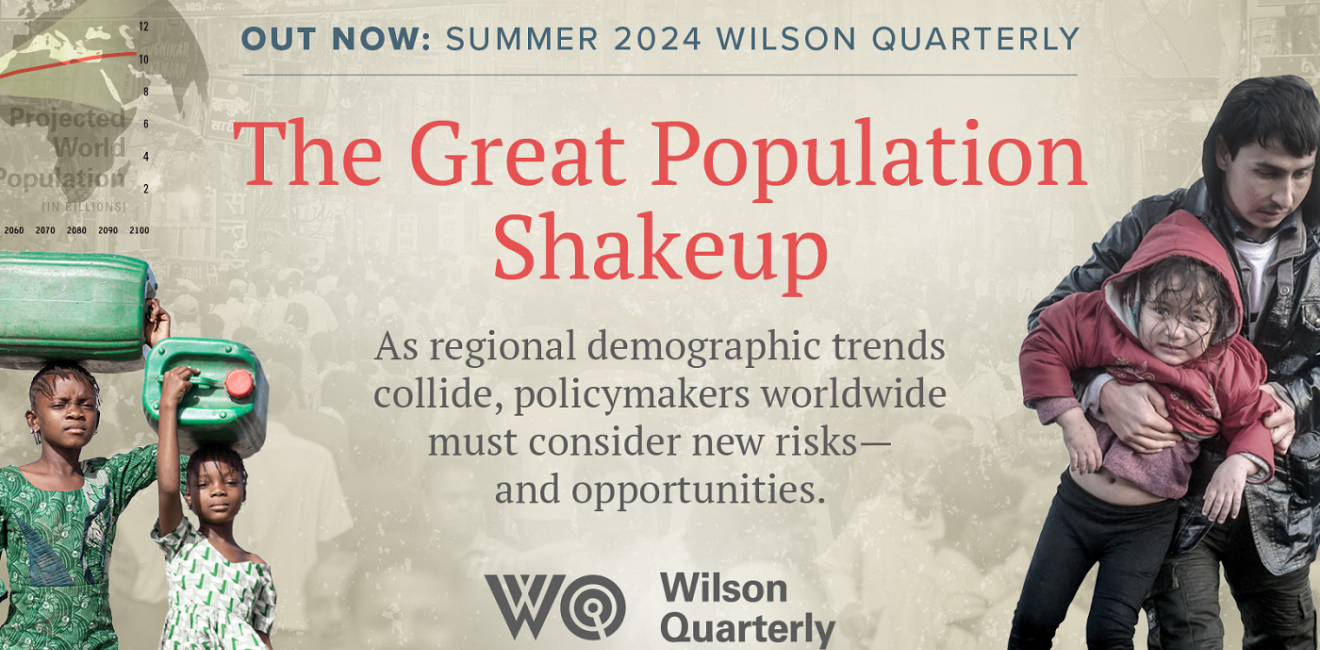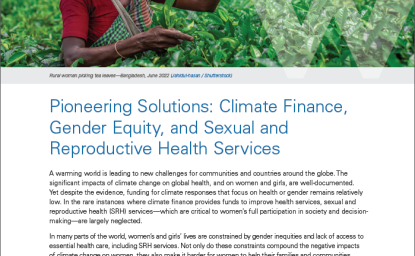
WASHINGTON – As the global population surpasses 8 billion, the world is facing a critical demographic moment with two defining characteristics. The world’s largest economies, whose populations are aging and shrinking, are looking for ways to sustain productivity and growth. On the other hand, several regions have younger, often fast-growing populations eager for long-sought economic development and social advancement.
Click Here to See the Award-Winning Website
These shifting dynamics have big implications for economies and political stability. If the US and the West fail to consider these changing population dynamics in decision-making, they raise the risk of economic and political instability at home and abroad, while missing vital opportunities for growth.
"As each feature for the issue came into focus, so did the intersections between population demographics and so many urgent issues. Climate, migration, health, economic prosperity, workforce development, and more, are all affected by current demographic shifts taking place around the world," said Stephanie Bowen, editor of the Wilson Quarterly. "It is my hope that readers will come away with a better understanding of those intersections and how policy decisions can help to address the challenges and embrace the opportunities of the current global population shakeup."
As the world settles into this new demographic moment, the summer 2024 issue of the Wilson Quarterly taps into some of the leading thinkers on this topic, who go beyond the “too many” or “too few” arguments that the media latches onto and examine the power and limits of population as it relates to foreign policy.
In this issue:
Introduction: The Great Population Shakeup – Lauren Herzer-Risi, director of the Environmental Change and Security Program at the Wilson Center, sets the stage for the issue and explains how global demographic shifts affect many US foreign policy issues.
Interactive: A Country’s Age Distribution and Its Path to Development – Richard Cincotta examines how a country’s age structure relates to its social, political, and economic development. An interactive map allows the reader to see how these relationships played out in specific countries from 1990-2021.
India’s People Power - Leela Visaria writes about India’s new designation as the world’s most populous country and the challenges and opportunities it now faces.
China Reaches Demographic Point of No Return – Wang Feng writes that while daunting challenges lie ahead, it’s not all doom and gloom as China’s population ages and declines.
Latin America: No Longer Young - Helder Marinho explores Latin America’s aging population through the perspectives of everyday people who are having fewer children, struggling to find meaningful work, and analysts who are helping governments in the region implement policies to address these new dynamics.
The Case for International Migration – Jack A. Goldstone writes that, whether driven by war, climate, or economic opportunity, more people are on the move than ever before. The challenges of global migration are real, but so are the opportunities.
Nigerian Youth in Focus: Africa's Future in a Single Nation – In this photo essay, Nigerian-American photographer, writer, and filmmaker Amarachi Nwosu curates a collection of photography that highlights the challenges and opportunities that come with having a rapidly growing young population.
Youthquake in the Middle East and North Africa - Clément Gibon speaks with young people who are part of a region that is growing at 2% annually and adding nearly 7 million people each year. This youth surge is bringing high unemployment rates among young people and threatens stability, but, as he reports, economic transformation is possible through education and job creation.
The Workforce of the Future - Stephanie Bowen and Tyler Marshall analyze how in the coming decades, populations will shrink in regions that for the past half century have fueled the greatest spurt of global economic growth, technical innovation, and prosperity humankind has ever known. To make the transition successful, building a competitive workforce is the new global imperative.
Moving Beyond Fertility Targets - Sarah Barnes and Jay Gribble forgo the usual demographic conversations that are data-heavy and alarmist to examine specific policies with a focus on people’s individual needs.
The Challenge of Our Age: Climate, Population, and Migration - Mark Maslin and Shooka Bidarian, make the case that the growing environmental and climate crisis is not caused by too many people but inefficient use of resources, then provide economic and political recommendations to ensure that 10 billion people live healthy, fulfilling, and sustainable lives.
Notes to editors:
-
The Wilson Quarterly, one of the nation’s premier journals since 1976, offers fresh takes, on-the-ground reporting, and thought-provoking perspectives through carefully curated articles and multimedia pieces. A unique narrative publication to emerge from the Washington think tank world, each issue takes a deep dive into a single topic or theme shaping our reality. The publication became digital-only in 2012. The views expressed are not necessarily those of the Wilson Center.
-
The Wilson Center provides a strictly nonpartisan space for the worlds of policymaking and scholarship to interact. By conducting relevant and timely research and promoting dialogue from all perspectives, it works to address the critical current and emerging challenges confronting the United States and the world.
###
Explore More
Browse Insights & Analysis
Beating the Backlash: Can Incremental Approaches Strengthen NGO Responses to Security-Based Migration Policies

A Continent of Consequence

